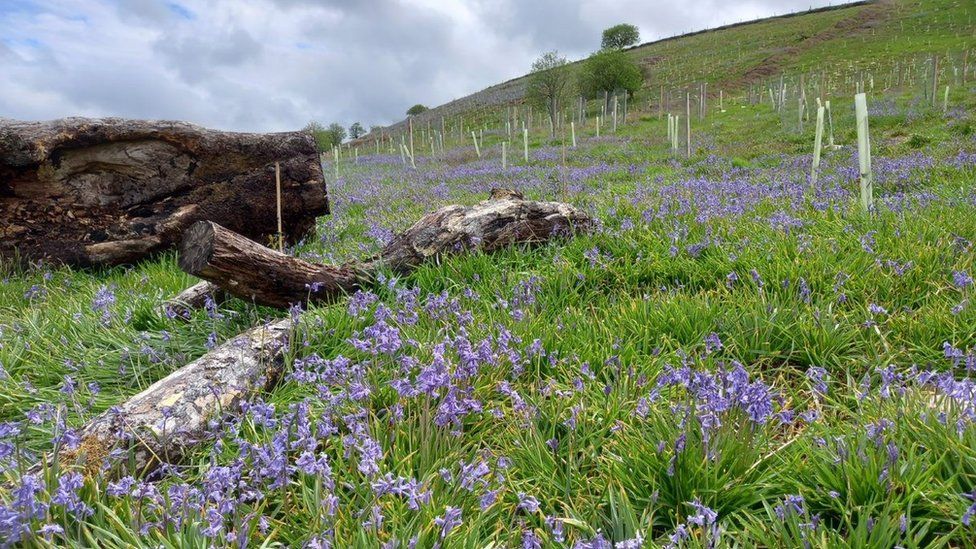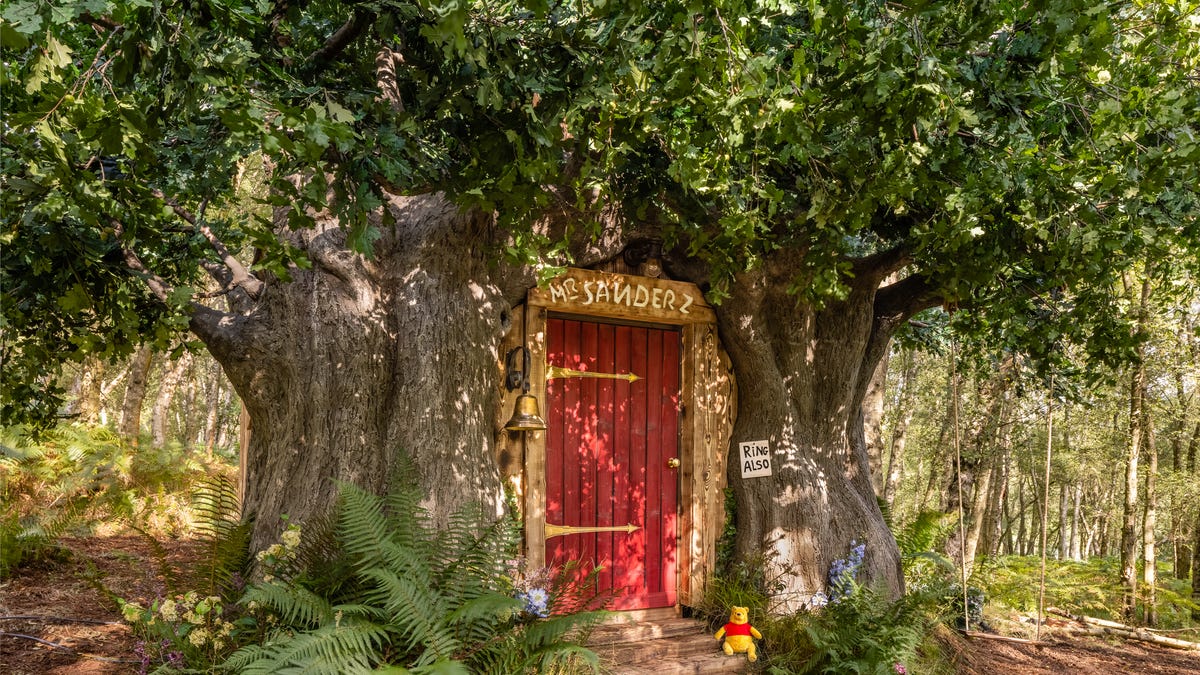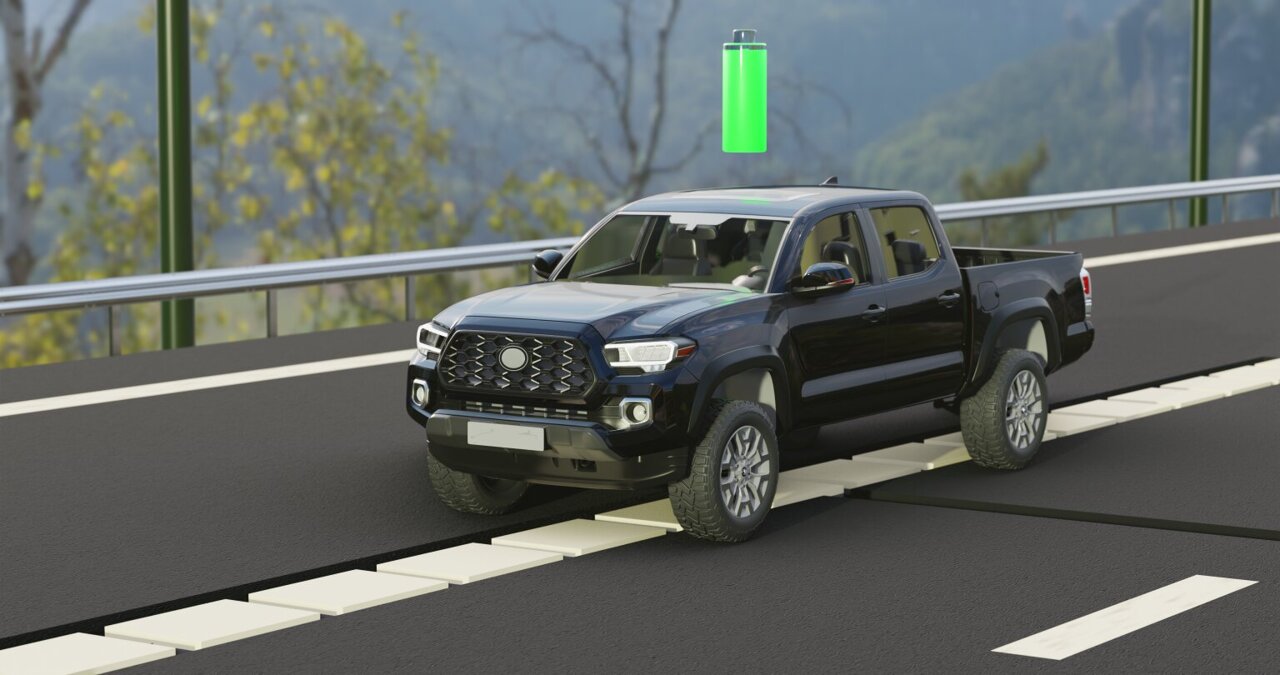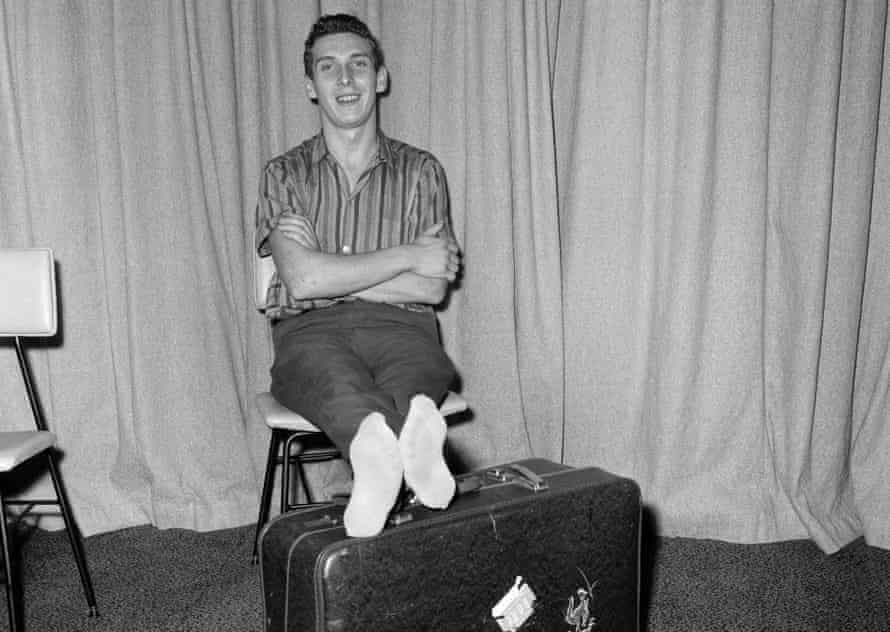
Travel
Solar-Powered Aircraft Easily Stays in the Air for Almost a Month
With solar power, it was just a matter of time before someone would figure out a method by which to fly a plane a reliable, long distance with solar power. Given the fact that a plane could easily get above the clouds, it would have an endless amount of power as long as it flew on the daytime side of the planet, in theory.
Airbus took that idea into reality with its Zephyr plane which, given the ability to fly on sunpower, was designed to stay up in the air for weeks at a time versus just an extended number of hours. Part of the goal with the project was to provide Internet access to ground parties in areas disconnected from regular grids. Overall, the project has been functionally a success, with six flights at different atmospheric levels. The high up stratospheric trips ran for at least two thirds of a month each. Long-term, hammering out the bugs, Airbus expects to easily be able to provide months-long service via plane, a particularly useful resource for those on the ground with remote commercial projects as well as military interests. In the same regard, the airborne resource could also be a boon for disaster areas where normal communication grids are knocked out or there is no power.
The actual plane itself only requires two small propellers for its guidance and propulsion. There is no pilot; the entire vehicle is manned remotely and by computer, similar to a drone. As a new flagship for Airbus’ unmanned aerial system program, the Zephyr is quickly raising eyebrows with its possibilities. In the aircraft business it’s one thing to talk about concepts and quite another to actually perform them consistently, which is where Airbus is now at successfully.
The design of the Zephyr and its production meets all the demands of modern delivery on the non-military side. The plane literally runs on green, sustainable technology, it expands communication capability in areas where its otherwise not reachable, and the plane is far less complicated to fabricate than a land-based network.
Designers expect much more from later designs of the Zephyr as well. Right now, the plane’s batteries run approximately three months. Airbus expects improvements to double that duration period. That has become a game-changer in terms of expanding technology out in areas that it’s normally not available, but basic electricity on the ground is accessible. With both elements, communication in the individual’s hand becomes a reality versus spotty cellular within the range of physical towers.
Travel
Exmoor Grows a Surprise Crop of Bluebells

To any occasional visitor in the area, seeing some flowers in Exmoor National Park wouldn’t cause anyone to blink twice or stop in their tracks. However, to the locals who know the natural history as well as biologists who study the area specifically, seeing Bluebells in full bloom is probably about the same impact as seeing a mega-100 foot tidal wave hitting the coast via a front row seat. For decades, the given plant has literally been non-existent.
However, in 2022, the little sprouts of a future forest have made a vivid appearance, blooming and taking over a hillside in the Park in probably the most vivid way possible. And, it has people wondering now what the area might have really looked like some 1,000 years earlier before development and people arrived in numbers.
The latest bluebell sprouting is the result of a 12-hectare planting project that is about midway through completion in terms of planting. For observers in the know, the sea of blooms is enough to stop a person in their tracks. Biologists are now thinking that the bluebells have been in the location the whole time. Unfortunately, they were buried for centuries without sufficient tree cover. However, now, with the proactive planting, the plants finally have the environment they need to bloom properly again. In summary, their ideal conditions have been re-created.
The primary blockage to the bluebells was a massive layer of bracken and choking ground bushes. However, when the Park’s teams started cleaning the place up and replanting trees with a higher-level cover and canopy, the bluebell remainders finally had a chance to thrive again. Many of the researchers involved expect that there will be more to follow. As the tree canopy thickens, the forest ground will begin to populate with a lot more, especially with plants that are probably “hibernating” the way the bluebells did.
The Exmoor project was part of a partnership and funded by multiple players. That included the National Park’s CareMoor Woods and Trees Appeal, as well as the Exmoor Charitable Trust, the Somerset West and Taunton Council, and the Lanacre Barn Gallery. The effort produced a whopping 8,000 trees planted, rooting in a combination of Scots pine, mountain ash, Devon service tree and sessile oak trees.
One particular bunch of the planting was dedicated especially to the Platinum Jubilee, including 70 sessile oaks grown locally to the desired height.
The final remainder still includes yet another 5,000 trees. This will be completed by volunteers and contracted vendors as the project can afford. And, no surprise, the project is also seeking additional support that can be collected to help complete the planting faster. The CareMoor Woods and Trees is in charge and managing the intake of all support provided.
Travel
$5M upgrade for California’s Newest Park Following Budget Revision

To Modesto’s southwest lies Dos Rios Ranch, a riverbank preserve where Governor Gavin Newsom is proposing the construction of a state park. On Friday, May 7, the governor included $5 million in his updated budget request for the financial year beginning on July 1, which includes the plan.
Dos Rios, a 2,400-acre expanse at the confluence of the San Joaquin and Tuolumne rivers, would have its first regular public access through this project.
On Wednesday, Armando Quintero, Director of State Parks took a tour of the proposed new state park location with River Partners, a non-profit entity leading the restoration.
Many individuals throughout the Central Valley don’t get the opportunity to see the region’s natural splendor up close and personally, Quintero added. In partnership with further agency heads, he spoke under the shelter of a valley oak tree. Dos Rios Ranch outside Modesto, California, is the site of River Partners’ technicians in the field, Estevan Frias’s milkweed planting.
A 45 million dollar rehabilitation work on approximately 2,400 acres of Dos Rios Ranch has been ongoing for nine years. In one big concept, it aims to improve flood protection, wildlife habitat, and water resources.
The annual May budget adjustment, which must be approved by the state Legislature, was completed on Friday. Spending from a $97.5 billion surplus, which was primarily generated by income taxes, is included in the entire $300.6 billion plan.
In the next five years, the department’s development and acquisition Assistant Deputy Director, Brian Dewey, predicts that Dos Rios will have paths, picnic spaces, restrooms, and other essentials. Within the next five years, campgrounds may follow. Dos Rios State Park, located roughly 10 miles away from Modesto, is the nearest state park for locals.
There is also the State Recreation Area at Turlock Lake, which has closed its doors due to not having a concessionaire, as well as an isolated section of Coe State Park situated in the Stanislaus County hills. The Hatfield and Caswell state parks are just a short drive apart but are separated by two rivers.
For the first time since Fort Ord Dunes in Monterey was established in 2009, Dos Rios will become the state’s 280th park. State Parks Director, Armando Quintero, met with Julie Rentner, President of River Partners, to discuss the possibility of incorporating a portion of Dos Rios Ranch into the system.
On May 11, 2022, they convened in the location southwest of Modesto, California. More than $46 million has been spent on Dos Rios by the company and its partners since 2012. Previously used for growing dairy feed among other commodities, they are now being planted with native trees, bushes, and grass. The risk of flooding in Manteca and nearby areas is reduced because of leaky levees.
Floodplain wildlife benefits from cottonwoods and other natural trees that have grown to heights of more than 30 feet. Milkweed is grown in a particular area to provide nectar for monarch butterflies. Material for basket-making is derived from another source. There will be an opportunity for public input if Friday’s budget request is approved, according to Dewey.
The floodplains would be spared parking facilities along with other construction. River Partners has taken over management of the site from a new location on Shiloh Road. Dos Rios, according to Quintero, is located close eastward to the National Wildlife Refuge along the San Joaquin River.
Residents will be able to launch rowboats in Modesto and further up the Tuolumne River to access the new park. According to Ms. Rentner, “This is how they’ll endure the summer inside the Valley… having shade along with water to reproduce in.”
On Friday, May 7, 2021, the Tuolumne River flows through the recently established Dos Rios Ranch in Modesto, California. As a portion of the improvement of the river environment and the floodplain, River Partners has already planted hundreds of thousands of native trees and plants.
Travel
Winnie the Pooh’s Forest House for Rent

If you know anything about Winnie the Pooh, the famous honey-loving bear from the Disney movie, as well as E.H. Shepard’s illustrations, then you know he didn’t live in a mansion. Instead, the tubby bear’s home was a modest forest dwelling with a small room, comfortable bed, and lots of practical knick-knacks that would make sense in the story, depending on what trouble Winnie got himself into that day.
As it turns out, deep in England’s Sussex region where A.A. Milne gained the muse to write about Winnie the Pooh, there is now a real, live treehouse that replicates exactly what Winnie the Pooh’s home was in the book and movie. To celebrate the 95th anniversary of the book and artwork, the treehouse was made real, including all the features and details pictured in the memorable illustrations. Kim Raymond ran project manager over the entire reconstruction, and he would be as good an expert as any to get it right. Raymond works for Disney and was in charge of the image creation of the cartoon bear for more than 30 years. To this day, he still studies E.H. Shepard’s work for inspiration and revisions of Winnie the Pooh for modern times.
So, as it turned out, the opportunity to create a real live version of Pooh’s treehouse couldn’t be passed up. Dubbed the “Bearbnb,” the set is authentic and lovingly dedicated to the original images from Milne’s story. Listed on Airbnb for a stay, the location will offer visitors a fully escorted tour of the entire area that represents Hundred Acre Wood. Folks will also get to see for themselves the famous Poohsticks Bridge, and there will be lots of delicacies involving honey as well. But don’t be alarmed, there will also be honey pots inside the Pooh Bear domicile as well.
Of course, there were some modernized upgrades to the current location to keep with the times. Operating plumbing is installed, and the rental is stocked with plenty of wellness products as well as yoga aids for those who want to fully relax during their stay. In a nutshell, the Bearbnb is going to be a great experience for Winnie the Pooh lovers and fans, of both the book and movie.
Some of the house rules are also pretty specific and consistent with how Winnie the Pooh kept his place. For example, no heffalumps are allowed across the doorframe inside, honey snacks are encouraged before lunch, one has to play Poohsticks always, naps are mandatory, no pets allowed (unless they are one of Pooh’s friends), and no smoking of any kind allowed. The honey bees won’t visit if they smell smoke.
Travel
Dead EV Batteries Might be Obsolete Soon With Magnetized Concrete Charging

The worry of losing power before reaching your destination is one of the most significant impediments to electric car adoption. In recent years, battery advancements have led to significant range increases in EVs. However, in terms of endurance and refueling speed, they still lag behind gasoline cars.
The idea of embedding some form of charging technology in highways is being studied, but replacing vast sections of highway with state-of-the-art charging infrastructure is a major undertaking.
Some organizations, such as Indiana’s Department of Transportation (INDOT), have already embraced the concept, announcing a collaboration with Purdue University and the German company Magment last month. They aim to see if embedding cement with magnetized elements could deliver an accessible solution to road-charging.
Most wireless vehicle charging solutions utilize inductive charging and their receiver coil would pick up charge via charging coils spaced out beneath the road at regular intervals.
It’s an expensive proposition, so Magment’s solution is to embed recycled ferrite particles into regular concrete, which can generate a magnetic field but are far less expensive. The corporation asserts that its device can attain up to 95 percent transmission proficiency with production at typical road construction costs.
Meanwhile, before being deployed on roadways, the Indiana project will go through two lab testing stages and a test run on a small stretch of roadway. However, if the cost savings are real, the strategy might be game-changing.
Various electric road experiment, beds are now operational, with Sweden leading the charge. Outside of Stockholm, they built an electric rail in the middle of a 1.2-mile section of road in 2018. It has a moving arm attached to its bottom that may disseminate power to a vehicle. In addition, an inductive charging system developed by the Israeli company ElectReon was successfully used to charge an all-electric truck over a one-mile stretch on the Baltic Sea island of Gotland.
The expected initial test project cost is roughly a million Euro per kilometer and 12.5 million Euros for the overall second phase. Automobile manufacturers appear to be warming to the notion, with Volkswagen joining a collaboration that will integrate ElectReon’s charging tech into EVs in a test study.
Another possibility is to instead install charging cables above the road that can power trucks similarly to how urban trams get fuel. The Siemens-built device has been deployed on around three miles of road outside of Frankfurt and is being tested by a number of trucking companies.
The system costs around $5 million per mile to install, but the German government believes it will be less expensive than switching to vehicles charged by hydrogen fuel cells or huge batteries to handle long-haul deliveries. The country’s transport ministry is weighing the pros and cons of the three options before deciding which to support.
Even if the economics are sound, putting in place road charging infrastructure will be a huge undertaking, and it might be decades before all highways can assist you with charging your vehicle. However, if technology advances at its current rate, empty tanks/dead batteries may become obsolete in the near future.
Travel
After Mailing Himself Home In A Crate From Australia, British Man Looks to Reconnect With Conspirators

When was the last time that you received an important package more than a day late? Waiting for the mail is never an exciting experience, but one British man was determined to see if he could change that concept all on his own. Brian Robson was just a teenager of 19-years-old when he became homesick while working for the Victorian Railways back in 1965. Unfortunately for Brian, he couldn’t afford to buy a plane ticket back home which would leave the youngster looking for alternative solutions. An answer would come in the form of a crate and one of the most audacious shipping decisions in recent memory.
Let’s take a moment to explore one of the zaniest stories to resurface in recent years!
One Wooden Crate, Two Irishmen, 0 Plane Tickets.
At the age of 19, Brian Robson wanted to leave home behind to find a career abroad. Taking a job with the Victorian Railways in 1965 would leave Brian flying to Australia to begin work. At the time, a plane ticket home cost roughly £700, or more than 17x Brian’s total monthly salary. So to say that a plane ticket was more than cost-prohibitive would be to put it lightly.
Still, Brian knew that he wanted to get home and that meant going the extra mile to make it happen, not that we’d recommend following in his footsteps. Rather than waiting 17 months to potentially purchase a plane ticket, Brian decided that he would take matters into his own hands. His home was back in Cardiff, Wales, and Brian was determined to make it back there in one piece.
So his planning began.
Robison quickly realized that he could afford to mail a crate back to Cardiff, but he couldn’t afford to get a plane ticket. Working backward from there, Brian would acquire a box roughly the size of a mini-fridge before stuffing it with a pillow, a suitcase, and a book filled with the latest Beatles songs. Understanding that he would be in a crate for upwards of 36 hours, Brian had to prepare. This was going to be a journey to remember.
Brian had found himself in Melbourne on an assisted immigration program. His expenses had been covered by the Australian government and Robinson would agree to sign a two-year contract with Victorian Railways in exchange. Robson would regret signing the contract almost immediately, but by then he would be stuck in Australia, a long ways from home, with no money to speak of.
A Trip to Remember (But Not to the Right Place!)
After having filled his box with the tools he’d need to survive his journey, Robson understood that he’d have to prepare himself physically for the quest. This meant that Robson would end up consuming laxatives for three days leading up to his departure to ensure his ability to survive inside the box. Outside his book, he had a bottle of water for drinking and another for urination.
Upon finishing construction of his ‘box’ and preparing the appropriate freight paperwork, Robson would hire two of his friends, a pair of Irishmen by the name of Paul and John, to help get him home. They would be responsible for nailing the lid closed on Brian while also marking the box ‘Fragile’. Delivered to the airport, Brian was ready for 36 hours of discomfort.
But the trip would turn into a disaster as Brian would get shipped to Los Angeles, landing four days later as a bleak and battered piece of cargo. At the time, Brian was assisted by the CIA, FBIA, and the American government. Brian said the police treated him like ‘a silly kid getting himself into trouble.’
Brian is still trying to reconnect with the men who helped facilitate his escape, however he has been incapable of remembering or discovering their surnames.
-

 OMG7 years ago
OMG7 years agoA Couple Gave Birth to the Most Beautiful Twins Ever
-

 OMG7 years ago
OMG7 years ago20 Rare Historical Photos
-

 OMG7 years ago
OMG7 years agoHilarious Airport Photos
-

 Cute7 years ago
Cute7 years agoMom Refuses to Let Daughter Eat Sugar and Years Later This is What She Grows Into
-

 OMG6 years ago
OMG6 years agoTop Secret Air Force One Facts That You Never Knew
-
OMG6 years ago
The Funniest Yearbook Photos Of All Time
-

 OMG7 years ago
OMG7 years agoRetired Mathematician Restores Log Cabin
-

 OMG5 years ago
OMG5 years agoWhat Happened When This ‘Duck Dynasty’ Legend Chopped Off His Beard?